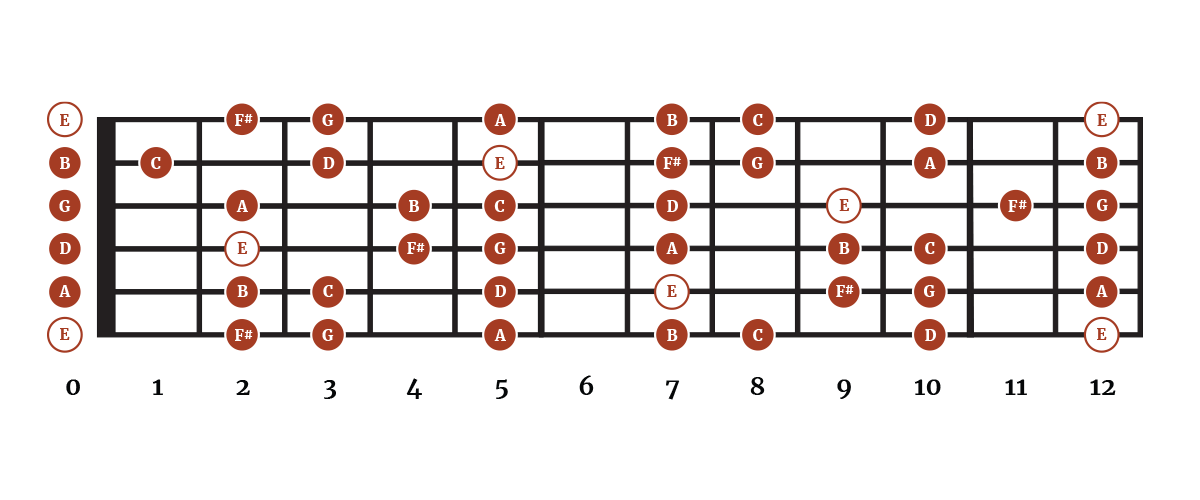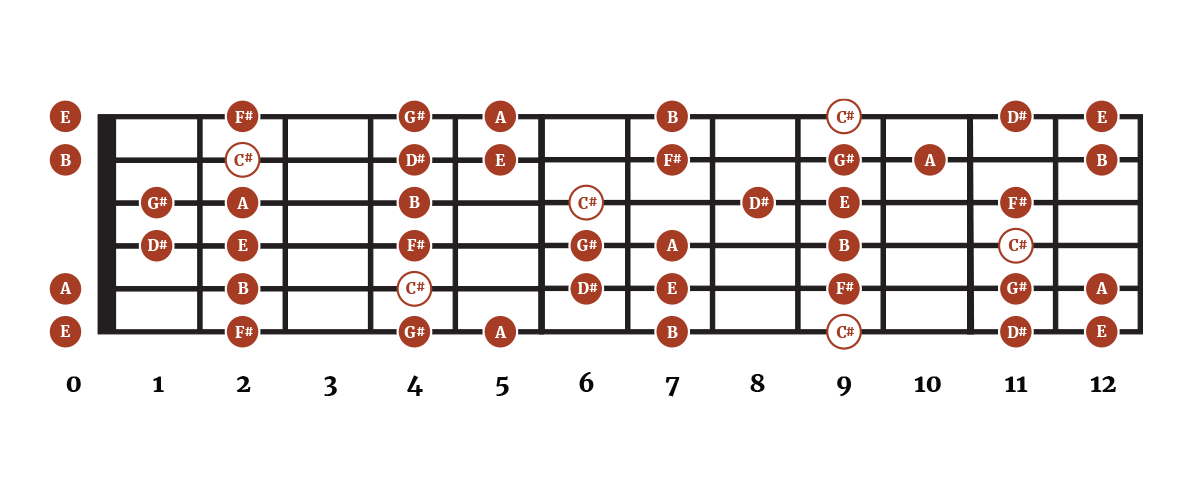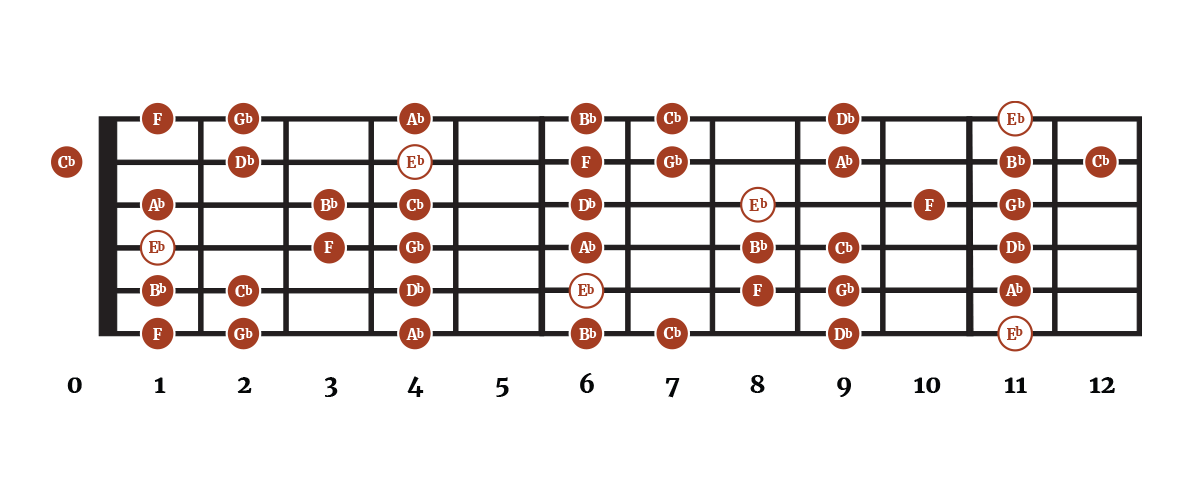The key of E minor contains the notes: E – F# – G – A – B – C – D

When assembled in order the notes form the E natural minor scale (aka Aeolian mode). For a quick breakdown of the key differences between the natural minor, harmonic minor, and melodic minor scales click here.
A guitar-friendly key
E minor is considered one of the most guitar-friendly keys. Here’s why:
Open Chords: E minor is known for its open chords e.g. chords that use open strings. In the key of E minor, we have easy access to chords like Em, Am, D, G, and C, all of which can be played with open strings. These chords are not only beginner-friendly but also create a warm and resonant sound on the acoustic guitar.
Natural Fit: The E minor scale (E, F#, G, A, B, C, D) closely resembles the open position of the guitar, meaning, when you’re playing in E minor, many of the notes you need are accessible within the first few frets, making it convenient for both beginners and experienced guitarists.
The E Minor Scale

The E minor scale (like all minor scales) follows the step pattern of:
whole, half, whole, whole, half, whole, whole
Keep in mind, that scales can be played in many different ways.
Chords In The Key Of E Minor
All chords within a minor key such as E minor follow a pattern of:
minor, diminished, Major, minor, minor, Major, Major
| min | dim | Maj | min | min | Maj | Maj |
| e | f# | G | a | b | C | D |

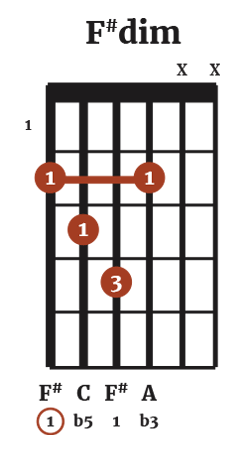


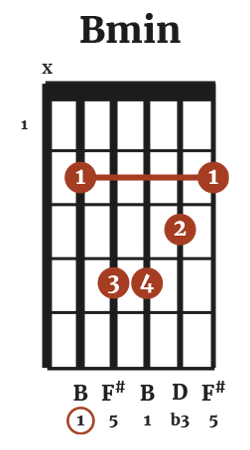
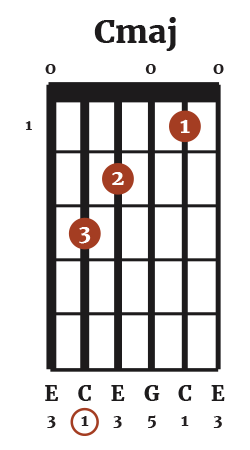

| Chord | Notes |
| E minor | E, G, B |
| f# diminished | F#, A, C |
| G Major | G, B, D |
| a minor | A, C, E |
| b minor | B, D, F# |
| C Major | C, E, G |
| D Major | D, F#, A |
7th Chords in E Minor
Seventh chords include the tonic (1st), third, fifth, and seventh scale degrees of a diatonic scale (a seven-note musical scale consisting of whole and half steps), unlike triads which contain just three notes.
The seventh chord quality (such as major, minor, diminished, or augmented.) can vary depending on the type of seventh interval used in the chord. There are several types of seventh chords, each with its unique sound and function in music.






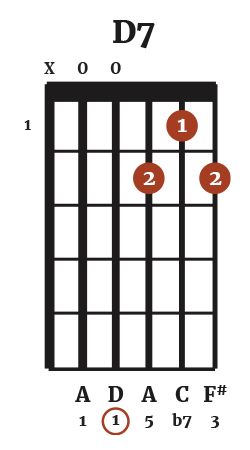
| Chord | Notes |
| E minor 7 | E, G, B, D |
| f# diminished 7 | F#, A, C, E |
| G Major 7 | G, B, D, F# |
| a minor 7 | A, C, E, G |
| b minor 7 | B, D, F#, A |
| C Major 7 | C, E, G, B |
| D Dominant 7 (D7) | D, F#, A, C |
Chord Function in E Minor
Chords can be categorized into three main functions: tonic, subdominant, and dominant. Tonic chords (i, VI) provide stability. Subdominant chords (iv, ii) introduce some tension but not as much as dominant chords (v, VII) which create the most tension and typically lead to a resolution.
| Tonic | Supertonic | Mediant | Subdominant | Dominant | Submediant | Subtonic |
| i | ii | III | iv | v | VI | VII |
| emin | f#dim | Gmaj | amin | bmin | Cmaj | Dmaj |
For example, The i chord (minor tonic) serves as the central point of stability. As it is constructed on the tonic note of the minor scale (e.g., E in the key of E minor) it provides resolution.
Alternatively, In the key of E minor, the dominant chord is b min which creates a strong pull toward the tonic chord, E minor, creating a sense of resolution when the chord progression resolves back to the tonic.
Common Chord Progressions In E Minor
| i – VI – VII | emin – Cmaj – Dmaj |
| i – VII – iv- VI | emin – Dmaj – amin – Cmaj |
| i – v – VI – VII | emin – bmin – Cmaj – Dmaj |
| i – III – VII – VI | emin – Gmaj – Dmaj – Cmaj |
| i – v – iv – VII | emin – bmin – amin – Dmaj |
Relative Major
The relative major refers to the major key that shares the same key signature as a minor key. In simple terms, they use the same set of notes, but their tonal centers (the tonic) are different e.g. the relative minor starts on the 6th scale degree of the relative major.
In minor keys, the relative major’s tonic note is the 3rd scale degree of the relative minor scale, meaning in the key of E minor, G Major is the relative major.

Resources
- PDF download showing the notes, scales, and chords in the key of E minor.
- Learn how to read chord charts
- Learn how to read guitar tab
